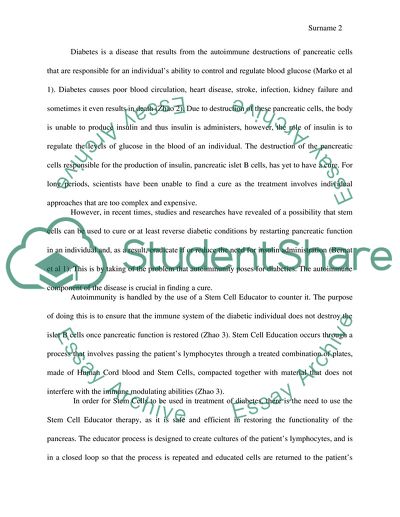Cite this document
(“Diabetes and Stem Cell Treatment Essay Example | Topics and Well Written Essays - 1000 words”, n.d.)
Diabetes and Stem Cell Treatment Essay Example | Topics and Well Written Essays - 1000 words. Retrieved from https://studentshare.org/health-sciences-medicine/1598901-diabetes-and-stem-cell-treatment
Diabetes and Stem Cell Treatment Essay Example | Topics and Well Written Essays - 1000 words. Retrieved from https://studentshare.org/health-sciences-medicine/1598901-diabetes-and-stem-cell-treatment
(Diabetes and Stem Cell Treatment Essay Example | Topics and Well Written Essays - 1000 Words)
Diabetes and Stem Cell Treatment Essay Example | Topics and Well Written Essays - 1000 Words. https://studentshare.org/health-sciences-medicine/1598901-diabetes-and-stem-cell-treatment.
Diabetes and Stem Cell Treatment Essay Example | Topics and Well Written Essays - 1000 Words. https://studentshare.org/health-sciences-medicine/1598901-diabetes-and-stem-cell-treatment.
“Diabetes and Stem Cell Treatment Essay Example | Topics and Well Written Essays - 1000 Words”, n.d. https://studentshare.org/health-sciences-medicine/1598901-diabetes-and-stem-cell-treatment.


